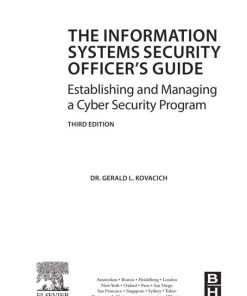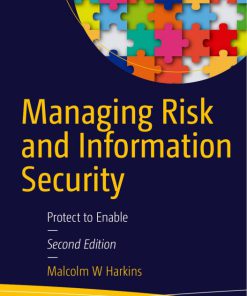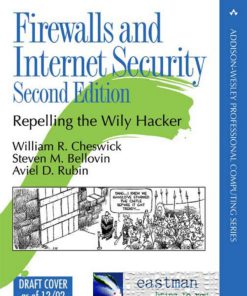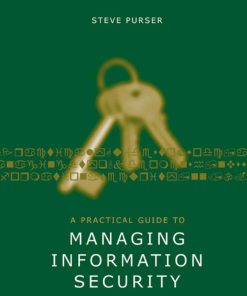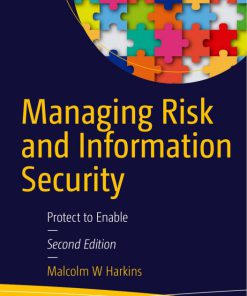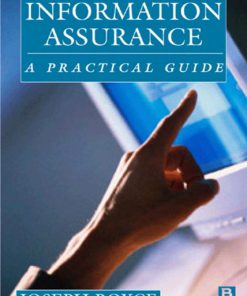Managing Information Security Risks The OCTAVE Approach 1st edition by Christopher Alberts, Peter Gordon, Audrey Dorofee, John Fuller ISBN 0321118863 978-0321118868
Original price was: $50.00.$25.00Current price is: $25.00.
Authors:Christopher J. Alberts; Audrey J. Dorofee , Series:Cyber Security [16] , Tags:Business & Economics; Management; Computers; Networking; General; Security , Author sort:Alberts, Christopher J. & Dorofee, Audrey J. , Ids:Google; 9780321118868 , Languages:Languages:eng , Published:Published:Apr 2003 , Publisher:Addison-Wesley Professional , Comments:Comments:From the CERT Coordination Center at the SEI, this book describes OCTAVE, a new method of evaluating information security risk.@BULLET = This book is from the CERT Coordination Center and Networked Systems Survivability (NSS) group at the SEI, the Software Engineering Institute at Carnegie Mellon University. @BULLET = There is growing interest in OCTAVE. The DOD Medical Health System is one early adopter and there is also keen interest from the financial sector. @BULLET = The authors are the lead developers of the OCTAVE method and are experts in helping organizations manage their own security risks.@SUMMARY = This is a descriptive and process-oriented book on a new security risk evaluation method, OCTAVE. OCTAVE stands for Operationally Critical Threat, Asset, and Vulnerability Evaluation (SM). An information security risk evaluation helps organizations evaluate organizational practice as well as the installed technology base and to make decisions based on potential impact.@AUTHBIO = Christopher Alberts is a senior member of the technical staff in the Networked Systems Survivability Program (NSS) at the SEI, CERT Coordination Center. He is team leader for security evaluations and OCTAVE. Christopher is responsible for developing information security risk management methods, tools, and techniques. Audrey Dorofee is a senior member of the technical staff in the Survivable Network Management Project in the NSS Program at SEI, CERT Coordination Center. CERT is the original computer security incident response center and is internationally recognized as a leading authoritative organization in this area.





